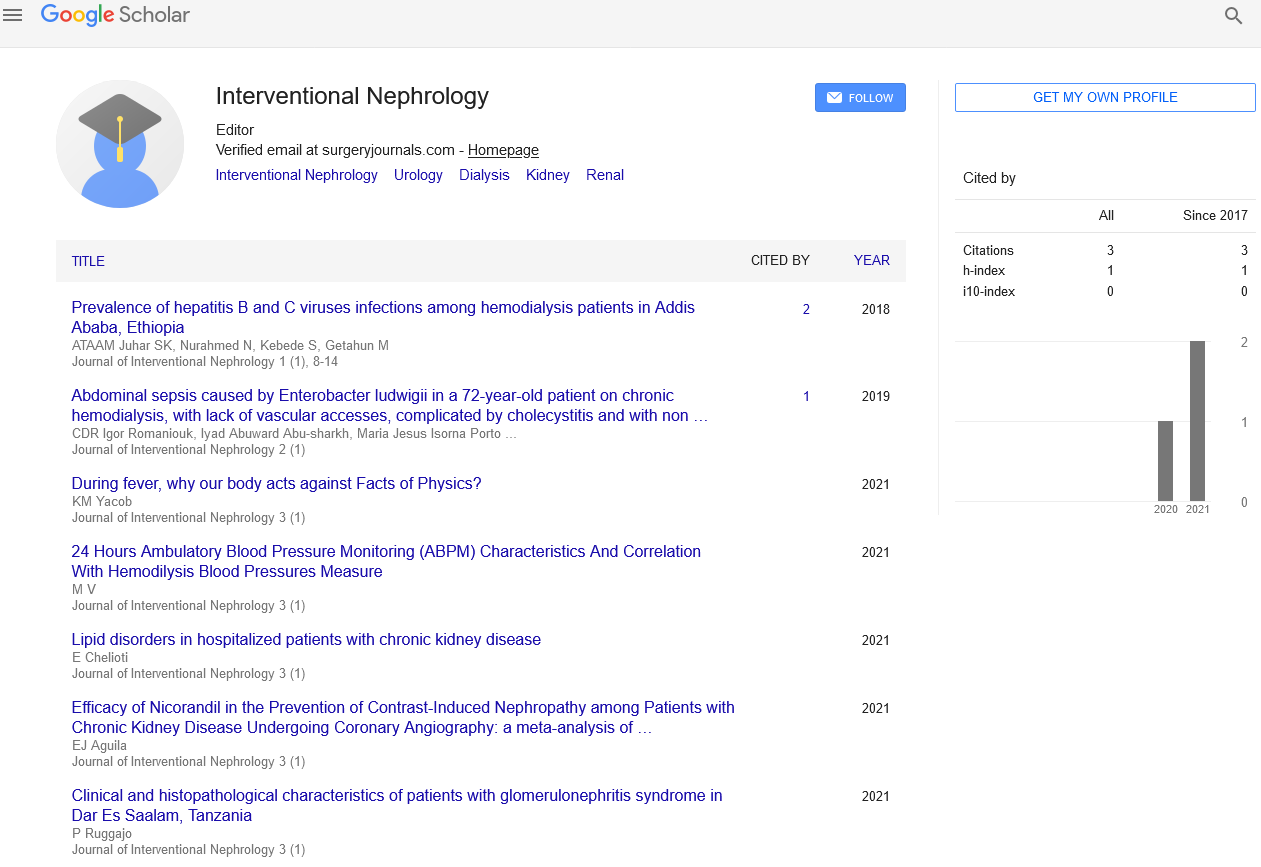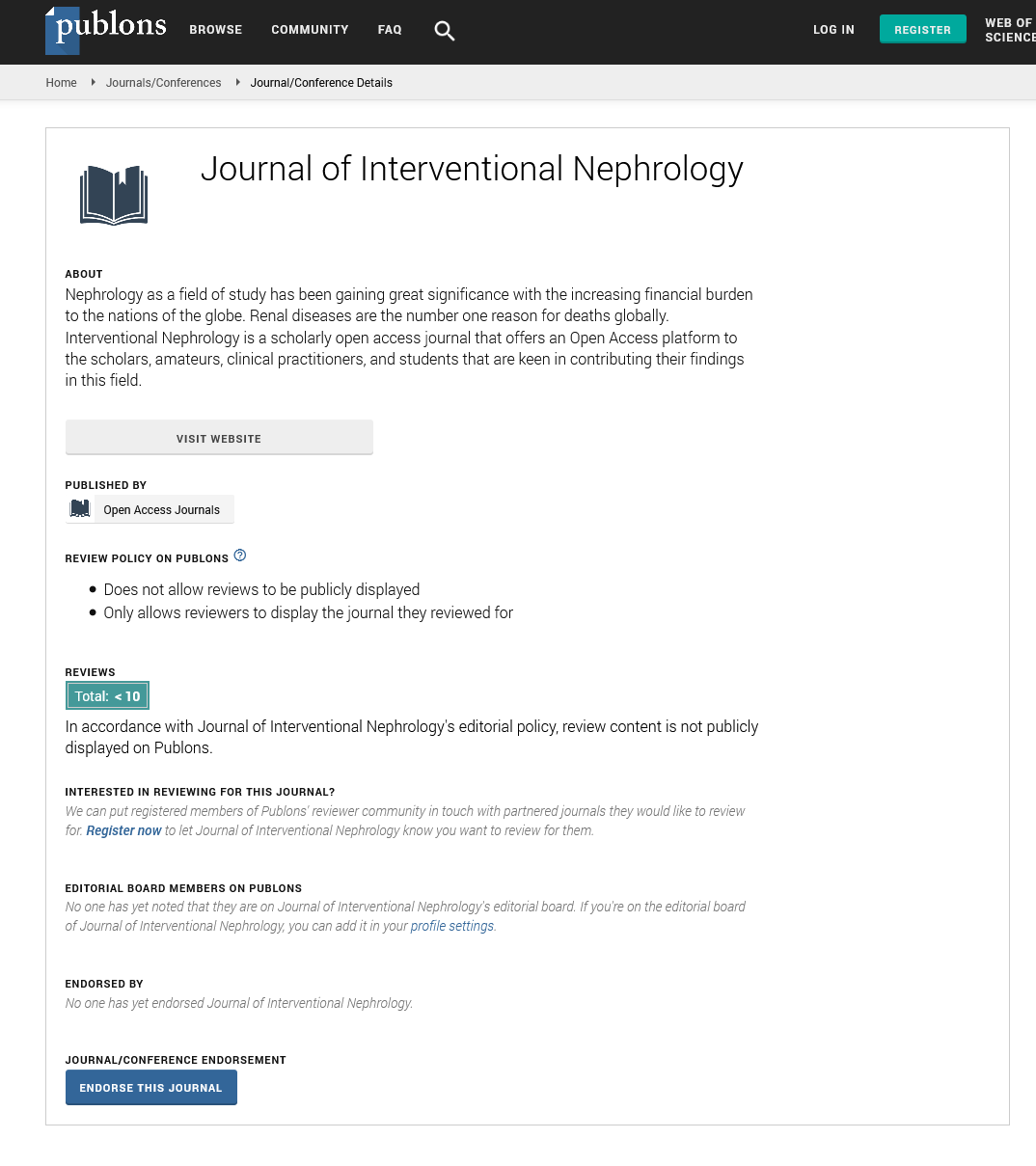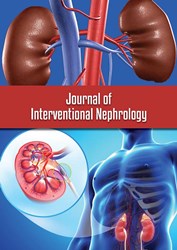Editorial - Journal of Interventional Nephrology (2022) Volume 5, Issue 6
As a last resort treatment for resistant hypertension in a patient with end-stage renal disease, bilateral nephrectomy
Zyan Mikaelson*
Department of Medicine, UCL College of Medicine, London, United Kingdom
Department of Medicine, UCL College of Medicine, London, United Kingdom
E-mail: Zyan39@gmail.com
Received: 01-Dec-2022, Manuscript No. oain-22-83966; Editor assigned: 03-Dec-2022, PreQC No. oain-22- 83966; Reviewed: 17-Dec-2022, QC No. oain-22-83966; Revised: 19-Dec- 2022, Manuscript No. oain-22-83966 (R); Published: 26-Dec-2022; DOI: 10.47532/oain.2022.5(6).77-78
Abstract
Primary glenohumeral osteoarthritis has been linked to renal disease, including chronic renal disease and end-stage renal disease. The effects of renal illness on recovery from shoulder arthroplasty, however, are little understood. Consequently, the goal of this study was to assess how renal illness affected the results of shoulder arthroplasty for glenohumeral osteoarthritis.
Introduction
In individuals with end-stage renal illness, uncontrolled hypertension is frequently observed [1]. There are primarily two methods used to control hypertension: the pharmaceutical strategy, which involves the use of several classes of antihypertensive medicines, and ultra-filtration titration in hemodialysis, which results in a decrease in plasma volume and an improvement in dry weight [2]. Rarely is bilateral nephrectomy used as a therapy for resistant hypertension when blood pressure control is unresponsive to conventional methods [2]. Bilateral nephrectomy has become obsolete due to the availability of new classes of hypertension medications, long-acting formulations, and developments in dialysis therapy. [3]. Here, we discuss how a young kid with intractable hypertension responded to rescue therapy via bilateral nephrectomy.
Methods
A 16-year-old patient with ESRF was evaluated for multiple episodes of life-threatening hypertensive emergency crises. The patient was diagnosed with systemic hypertension at the age of 13, and after he presented late with ESRF and was started on hemodialysis, his blood pressure remained largely resistant to pharmacological and volume-reduction measures. When he was 11 and a half years old, he had a cystoscopic posterior urethral valve ablation after being identified with the condition during his infantile years. Vesicostomy was intended after it was unsuccessful. Unfortunately, the patient had neglected to receive follow-up care and returned at the age of 10 with advanced chronic kidney disease caused by obstructive uropathy [4].
Even during hypertensive crises, he was euvolemic upon examination, and neither an abdominal mass nor a renal bruit could be felt or heard on auscultation. Additionally, there was no difference in blood pressure (BP) between the arms. There was no evidence of a genetic or familial history of renal illness or hypertension. He had a cheerful disposition, was active, and did not abuse alcohol or other drugs [5, 6].
Discussion
In patients with end-stage renal illness, hypertension is frequently present. In individuals with end-stage renal illness, sodium and water retention, activation of the RAAS system, and increased sympathetic activity all contribute to the pathophysiology of hypertension. Although most patients with end-stage renal disease have their hypertension under control, 20% of them still have resistant or uncontrolled hypertension even after using pharmacological and volume-reduction treatments [5]. Since 1930, bilateral nephrectomy has been used as a therapy for malignant hypertension [6]. The usage of bilateral nephrectomy has decreased over time due to the introduction of new types of hypertension medications, particularly those that act on RAAS, and improvements in dialysis procedures [7], [8].
Conclusion
Our case study demonstrates that pretransplant bilateral nephrectomy can be used as a treatment option for refractory hypertension in an end-stage renal disease patient who is receiving regular hemodialysis when the best medication and hemodialysis techniques have failed [9], [10].
Acknowledgement
None
Conflict of Interest
None
References
- Calhoun DA, Jones D, Textor S. Resistant hypertension: diagnosis, evaluation, and treatment. A scientific statement from the American Heart Association Professional Education Committee of the Council for High Blood Pressure Research. Hypertension. 51, 1403-1419 (2008).
- Egan BM, Zhao Y, Axon RN. Uncontrolled and apparent treatment resistant hypertension in the United States, 1988 to 2008. Circulation. 124, 1046-1058 (2011).
- Daugherty SL, Powers JD, Magid DJ. Incidence and prognosis of resistant hypertension in hypertensive patients. Circulation. 125, 1635-1642.
- Persell SD. Prevalence of resistant hypertension in the United States, 2003-2008. Hypertension. 57, 1076-1080 (2011).
- Irvin MR, Shimbo D, Mann DM. Prevalence and correlates of low medication adherence in apparent treatment-resistant hypertension. J Clin Hypertens (Greenwich) 14, 694-700.
- Bangalore S, Fayyad R, Laskey R. Prevalence, predictors, and outcomes in treatment-resistant hypertension in patients with coronary disease. Am J Med. 127, 71-81 (2014).
- Muntner P, Davis BR, Cushman WC. Treatment-resistant hypertension and the incidence of cardiovascular disease and end-stage renal disease: results from the Antihypertensive and Lipid-Lowering Treatment to Prevent Heart Attack Trial. Hypertension. 64:1012-1021 (2014).
- De Nicola L, Gabbai FB, Agarwal R. Prevalence and prognostic role of resistant hypertension in chronic kidney disease patients. J Am Coll Cardiol. 61, 2461-2467 (2013).
- Kumbhani DJ, Steg PG, Cannon CP. Resistant hypertension: a frequent and ominous finding among hypertensive patients with atherothrombosis. Eur Heart J. 34, 1204-1214 (2013).
- Tanner RM, Calhoun DA, Bell EK. Incident ESRD and treatment-resistant hypertension: the reasons for geographic and racial differences in stroke (REGARDS) study. Am J Kidney Dis. 63, 781-788 (2014).


